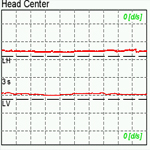Videonystagmography Testing

VNG testing is used to determine if a vestibular otherwise Known as inner ear disease may be causing a dizziness or balance problem. This is one of the few tests available today that can determine whether there is unilateral or bilateral vestibular loss. VNG testing consists of a series of tests designed to document a person's ability to visually track objects and determine how well the eyes are responding to information from the vestibular system.
A VNG will also address the functionality of each ear and determine whether a vestibular deficit may be the cause of a dizziness or balance problem. To monitor the patient’s eye movements, infrared goggles are placed over the eyes to record eye movements during the test. A VNG is a non-invasive test and there is only minor discomfort felt by the patient, as a result of wearing the goggles. Appointments generally last about 45 minutes, and testing is reimbursed by all insurances.

Occular Mobility
Patients will be asked to have their eyes follow objects that jump from place to place, move smoothly , and standstill. The technician will look for any delay or inaccuracy in the patient’s ability to follow a visual target. Any delay or inability to visually track these movements could indicate a central or neurological problem. It could possibly indicate a problem in the pathway connecting the vestibular system to the brain.
Optokinetic Nystagmus
Patients will be asked to observe a large, continuously moving visual image to see if their eyes are able to appropriately track these movements. During this portion of the test, the technician will be looking for any delay or inaccuracy in the patient’s ability to follow a visual target. This too may indicate a central or neurological problem, or possibly a problem in the pathway connecting the vestibular system to the brain.

Positional Nystagmus
The technician will instruct the patient to move their head and body into various positions to ensure that there are no inappropriate eye movements (nystagmus), when their head is in different positions. This part of the test is looking at the inner ear system and the condition of the endolymph fluid in the semi-circular canals. The technician is verifying that small calcium carbonate particles called otoconia are not suspended in the fluid, which can cause a disturbance in the flow of the fluid.
Caloric Testing
The technician will stimulate both of the patient’s inner ears one at a time with warm air, followed by cold air, while monitoring the movements of the eyes using goggles to make sure that both of the patient’s ears can sense this stimulation. This test confirms whether the vestibular system for each ear is working and responding to stimuli. This is the only test available that can decipher between a unilateral or a bilateral loss.
